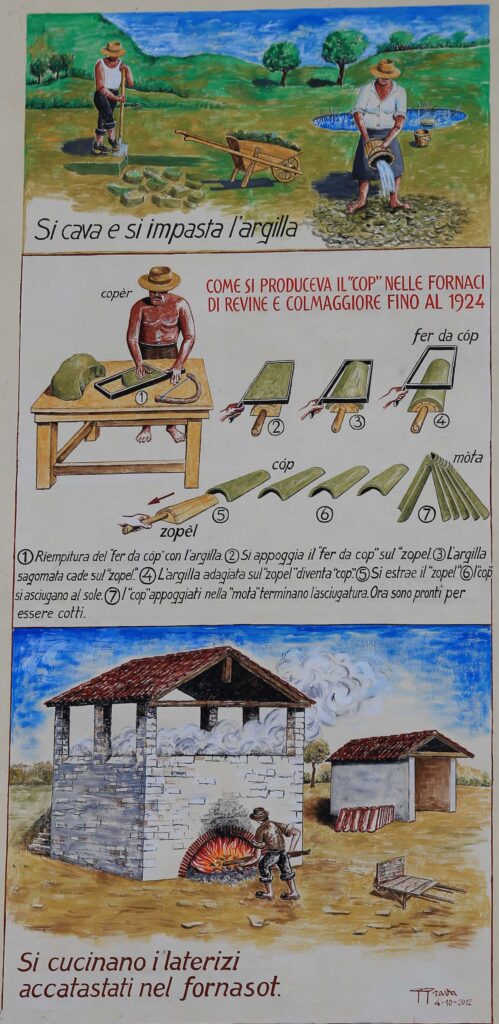
Località Colmaggiore di Sopra, 50 Tarzo (TV)
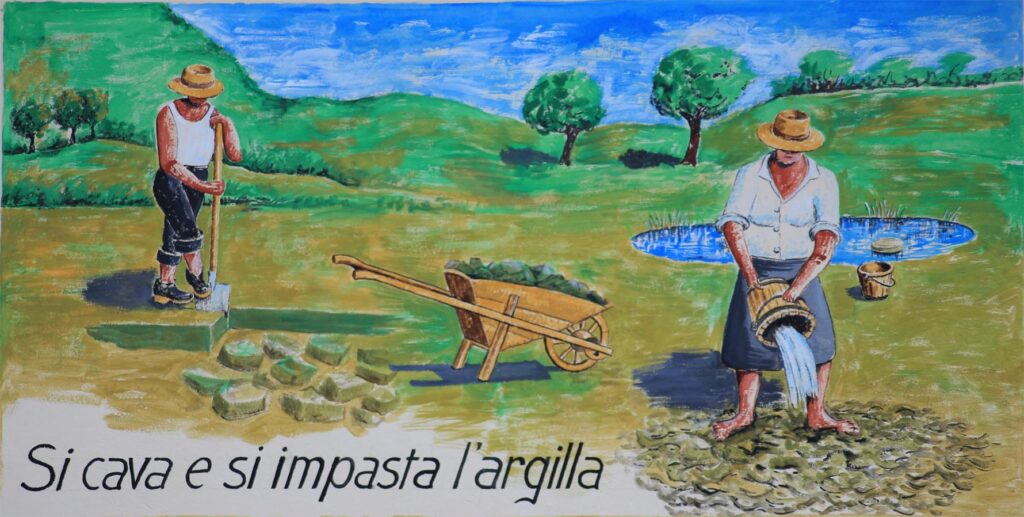
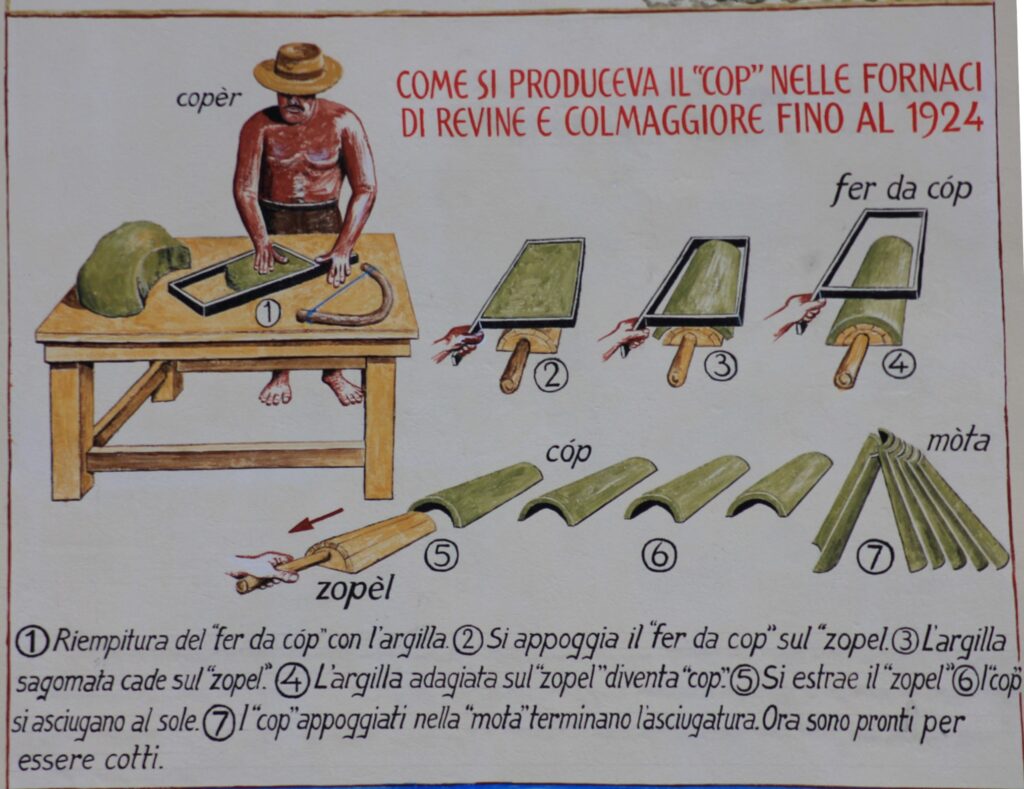
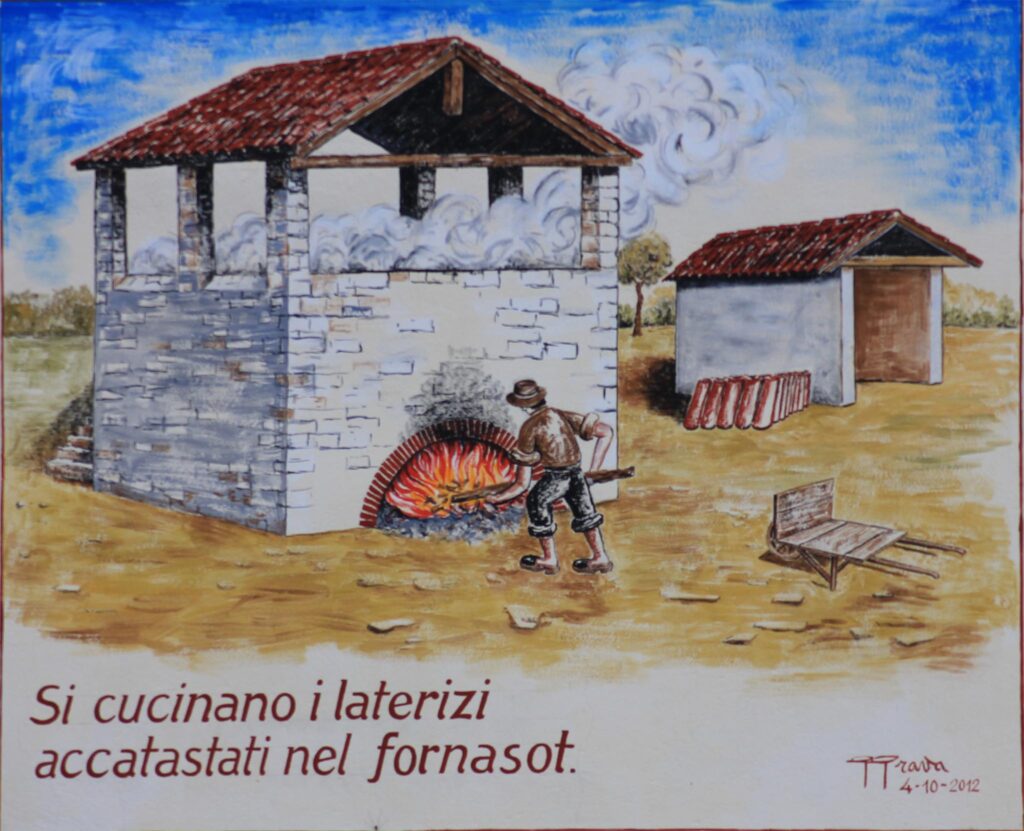

LA PRODUZIONE DE I “COP”
Ubicazione: Colmaggiore di Sopra – Casa Favero Dal Gobbo
Autore: Giuseppe Grava
Anno realizzazione: 2012
Tecnica: Pittura acrilico
I “cop” sono tegole fatte di argilla cotta, estratta in tutta la zona, fino a Revine Lago, dov’era ubicata la più importante Fornace Tomasi; dava lavoro a molti abitanti della zona, soprattutto a chi non aveva terra da coltivare. Dagli archivi storici risulta che dalla fornace rappresentata nel murales, fino al paese di Revine vi erano ben sei “Fornasot”, forni per la cottura e la produzione dei laterizi. L’argilla estratta veniva impastata con i piedi, per ottenere una miscela omogenea e modellata a mano utilizzando degli stampi, rappresentati nell’opera, e successivamente cotta nelle fornaci a legna. Il murales, realizzato nel 2012, descrive il procedimento con abbondanza di particolari e con precisione nella raffigurazione delle varie fasi della lavorazione. Anche in questo caso troviamo un forte legame economico tra il territorio e ciò che la natura offre. L’attività si è protratta in questa zona fino ai primi decenni del ‘900, per quanto riguarda le fornaci più piccole, mentre per quella di Revine Lago, Fornace Tomasi, è stata in funzione fino al 1960, per poi trasferirsi nel coneglianese.

La produzione dei cop (Roof tile production)
Location: Colmaggiore di Sopra (House Favero-Dal Gobbo)
Author: Giuseppe Grava
Year of creation: 2012
Technique: acrylic
The “cop” are roof tiles made of cooked clay, which was extracted in the whole area extending up to Revine-Lago, where the most important furnace, the Tomasi furnace, was located. The Tomasi furnace gave an occupation to many inhabitants of the area, especially to those who didn’t have any land to farm. According to the historical archives from the furnace depicted in the painting to Revine-Lago there were six “fornasot”, that is smaller furnaces for the cooking and the production of bricks. The extracted clay was kneaded with feet to get a homogeneous concoction and molded by hand using molds, represented in the painting, and then cooked in the furnaces. The wall painting, made in 2012, describes the process with many particulars and precision in the depiction of the various production phases. In this case too we can find a strong bond between the territory and what nature offers. This activity continued in this area until the beginning of the XX century for the smaller furnaces, while the Tomasi furnace functioned until 1960. It then moved to the Conegliano area.
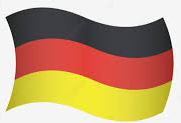
Die Herstellung von die “cop”
Standort: Colmaggiore di Sopra – Haus Favero Dal Gobbo
Autor: Giuseppe Grava
Jahr: 2012
Technik: Acrylfarbe
Die “cop” sind Ziegel aus gekochtem Ton extrahiert hier bis Revine Lago, wo der wichtigste Brennofen “Tomasi” seinen Sitz hatte. Der Brennofen gab vielen Einwohnern Arbeit, vor allem für diejenigen, die nicht anbauten.
Aus den historischen Archiven geht hervor, dass es 6 “Fornasot” (Öfen zum Brennen und Herstellen von Ziegeln) von Brennofen bis Revine Lago gab. Der extrahierte Ton wurde mit den Füßen geknetet, um eine homogene Mischung zu erreichen und wurde handgeformt mit Hilfe von Stempeln (im Wandbild vertreten) und endlich wurde im Holzöfen gebacken.
Die Wandmalerei (2012) veranschaulicht den Ablauf und die verschiedenen Verarbeitungsschritte. Es besteht eine starke wirtschaftliche Verbindung zwischen Gebiet und Naturprodukten. Die Tätigkeit der kleinsten Hochöfen dauerte bis in die frühen Jahrzehnte des 20. Jahrhunderts, während der Brennofen “Tomasi” bis 1960 in Betrieb war (danach es zog nach Conegliano).